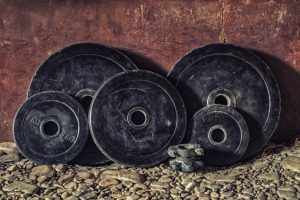The one repetition maximum (1RM) is a test of muscle strength. It is defined as the maximal amount of weight an individual can lift once, but not twice, when using the correct technique. Common 1RM tests include the bench press, chest press machine, biceps curl, lat pulldown, back squat, leg press, and knee extension.
Over the past 40 years, 1RMs have underpinned resistance training research. Hundreds of studies have used 1RMs to characterise strength differences between different types of athletic and non-athletic groups and to evaluate the apparent effectiveness of exercise interventions at improving muscle strength.
Because many individuals who participate in exercise trials will have no previous experience with lifting heavy weights, there has been concern about a potential “learning effect” with 1RMs. A learning effect occurs when individuals improve their performance on a test simply by practicing the motor skills associated with the test. In exercise trials, a learning effect is a serious complication because it hinders a researcher’s ability to discern how much of an improvement in muscle strength after an intervention can be attributed to the exercise intervention.

One of the first studies to illustrate the learning effect with 1RMs was published by Lori Ploutz-Snyder in 2001 (Ploutz-Snyder 2001). Ploutz-Snyder, who later became a senior scientist at NASA’s Exercise Physiology and Countermeasures Project, asked 7 young women and 6 older women to complete 1RM strength tests on the knee extension machine. She monitored how many testing sessions it took before the participants stopped performing better on the test. She discovered that the young women required 3 or 4 testing sessions, whereas the older women required 8 or 9 sessions. The young women improved their 1RM by 12% over the course of the experiment. The older women improved their 1RM by 22%!
Since Ploutz-Snyder’s study, a host of other studies have examined the reliability of 1RM strength tests. In our recent review on the reliability and validity of measures of muscle strength and voluntary activation (Nuzzo et al. In press), we summarised results from about 20 studies that examined the reliability of 1RM tests. In addition, we looked for evidence of a learning effect with isometric and isokinetic strength tests
WHAT DID WE FIND?
We found there is a learning effect for some, but not all, 1RM tests. The increase in strength from the first to second testing sessions can be as high as 5% for the bench press and biceps curl and as high as 10% for the back squat.
A number of studies, using a design similar to Ploutz-Snyder’s, found that performance on the 1RM test continued to increase beyond the second testing session. For some 1RM tests, the increase on the third or fourth day of testing was as high as 20% – similar to what Ploutz-Snyder reported for the group of older women.
Moreover, many of the studies we reviewed included separate familiarisation sessions in which study participants were oriented with the exercise equipment before the first 1RM testing session. Thus, one period of familiarisation does not eliminate the learning. Also, the learning effect was present in all types of participants: men, women, young adults, older adults, those with previous resistance training experience, and those without previous training experience.
Finally, no learning effect was observed for the various isometric and isokinetic strength tests we examined. This is probably because less coordination and knowledge are required to perform these tests.
SIGNIFICANCE AND IMPLICATIONS
The first implication of these results is that research studies that use 1RM strength tests should include control groups. This will enable researchers to make appropriate conclusions about the effect of an intervention on muscle strength.
Second, the presence of the learning effect suggests studies should include multiple measures of muscle strength (e.g., isometric or isokinetic strength, or maximal muscle twitches from peripheral nerve stimulation). The benefit of using multiple measures of strength is they can help ascertain if a change in performance on one test reflects a global change in muscle strength rather than a specific neuromuscular adaptation from simply practicing the test.
PUBLICATION REFERENCE
Nuzzo JL, Taylor JL, Gandevia SC. CORP: assessments of upper- and lower-limb muscle strength and voluntary activation in humans. J Appl Physiol. In press. If you cannot access the paper, please click here to request a copy.
KEY REFERENCES
Ploutz-Snyder LL, Giamis EL. Orientation and familiarization to 1RM strength testing in old and young women. J Strength Cond Res 15(4): 519-523, 2001.
AUTHOR BIO
Dr. Jim Nuzzo (@JamesLNuzzo) is a Postdoctoral Fellow at Neuroscience Research Australia (NeuRA). He studies how strength training alters the neural connections between the brain and muscles. To read Jim’s other blogs, click here.
